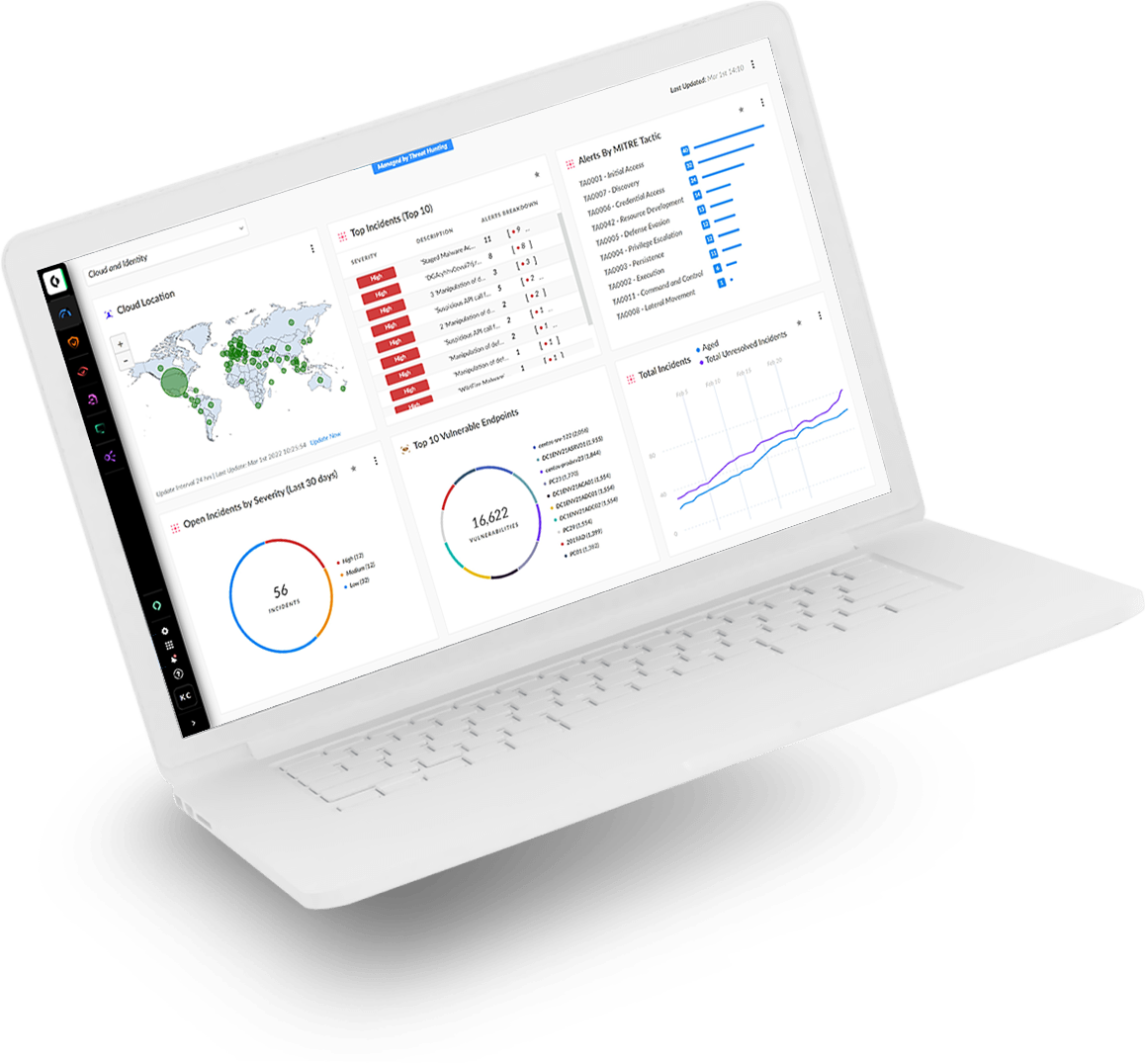Cortex XDR is the better choice
to stop modern threats
When compared to Cortex XDR, Microsoft 365 Defender delivers an incomplete solution with insufficient coverage across diverse environments, leading to gaps in security. Microsoft’s licensing is confusing and their packaging is complex, requiring customers to purchase and deploy several different products and manage multiple user consoles in an attempt to achieve real XDR-like capabilities. Organizations end up with a pieced-together solution that still lacks full XDR features and performance.
Cortex XDR is the first true XDR, trusted by over 3,000 customers. With a proven track record of success, Cortex XDR consistently outperforms Microsoft 365 Defender in independent third-party testing, like the MITRE ATT&CK Evaluations. Learn why leading organizations trust Cortex XDR over Microsoft to prevent, detect and respond to all threats.

Superior Detection & Visibility
Effective threat detection capabilities are crucial to stopping cyberattacks, but a rapid response to incidents is futile without full visibility and context into the attack. In the MITRE ATT&CK Round 4 Evaluations, Cortex XDR detected 100% of all attack steps, with over 98% visibility into all malicious activity. Microsoft 365 Defender only provided full detail for 77% of the 109 attack steps, entirely missing 11% of overall attack steps. Lack of detailed data makes it impossible for analysts to understand full attack sequence and scope, and creates significant opportunities for attackers to conduct further activity while going unnoticed. Microsoft also required 13 configuration changes or “do-overs” in the MITRE Evaluations when initial detections were missed. In the real world, attackers don’t give second chances.
The Cortex XDR agent provides complete coverage for endpoints across Windows®, macOS, Linux, Chrome® OS, and Android® systems and across private, public, hybrid and multicloud environments, while Microsoft has more limited functionality on MacOS, Linux and legacy Windows.

Enterprise-Wide Coverage
Microsoft 365 Defender also lacks crucial telemetry sources required for XDR, such as user and entity behavior analytics (UEBA) and network traffic analysis (NTA) data. Without this data, advanced and unknown threats can go undetected.
Microsoft 365 Defender is also unable to ingest all identity data sources or network fabric data from common identity platforms like Duo or Okta®. These limitations create the need for additional product purchases and more siloed security tools.

A Single, Unified View into Threats
Cortex XDR helps simplify SecOps by providing one platform for detection and response across all data, correlating alerts and incidents into a single view. SOC analysts use one automated, web-based console to prevent threats and accurately identify and detect incidents and accelerate investigations. Microsoft 365 Defender requires the use of several different products and management consoles in order to achieve the full functionality that Cortex XDR provides. Why tolerate siloed products and disparate management consoles that impede your team’s ability to detect and respond to threats? With Cortex XDR, SOC teams don’t have to switch between multiple siloed tools and patch information together to effectively do their job.
Is Your Endpoint Security Solution Good Enough?

Cortex XDR consistently outperforms Microsoft 365 Defender in MITRE ATT&CK® Evaluations
In the 2022 MITRE ATT&CK Evaluations, only 77% of the possible detections by Microsoft resulted in the highest level of detail (technique level detections), with the rest either missed entirely or providing an inferior level of detail about attack actions.
Cortex XDR delivered 100% threat protection and 100% detection of all attack steps for the second year in a row, with 97% of technique detections providing the highest level of detail into attack steps to enable analysts to more quickly and accurately respond to events.




